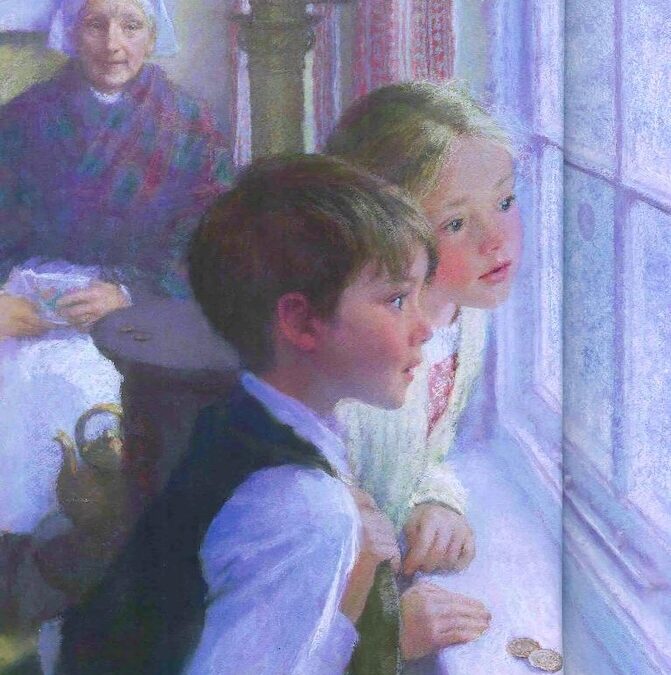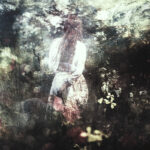“Life itself is the most wonderful fairy tale of all.” ~ Hans Christian Andersen
Considered one of the greatest storytellers of all, and the father of fairy tales, Hans Christian Andersen wrote not merely for children, he wrote for us as adults. He infused rich spiritual and emotional depth into his tales, the wisdom of which still guides us with light and touches the hearts of people worldwide.
So today let’s dive into the author’s beautiful personal world, as it is a story of inspiration, perseverance, self belief and trust, and I’ll also share with you one of his earliest short tales The Tallow Candle foretelling his destiny of a storyteller whose words were always meant to light and nurtures the flames for all those after him for centuries to come.
For those of you interested in deeper dive of his tales, I’ve previously written in depth on
The Little Mermaid, and
Hans Christian Andersen was born on the 2nd of April 1805 in Odense, Denmark. At a young age, Andersen had to support himself and worked as an apprentice to a weaver, and later, to a tailor.
He loved writing since an early age, but the truth is that along the way, he was continuously criticized for his writing, and in his school his teacher told him he was “a stupid boy” and would never be a writer. Writing was considered an art and craft only for those of higher status, and Andersen came from humble background, so he wasn’t well accepted. The words of his teacher deeply hurt young Andersen, and for a while he had given up on writing.
At fourteen, he moved to Copenhagen to work at a theatre, and there, one of his colleagues came across some of Andersen’s writing pages and encouraged him to continue writing, because he believed Andersen had a true talent, considering him a poet. Feeling encouraged, Andersen began focusing more seriously on his writing again.
Andersen himself was a spiritual man and it is no wonder that as we unfold the layers of his faity tales we find depths of spiritual wisdom and esoteric symbolism. We can often see some Christian imagery and symbolism in his tales, which was also typical of nineteenth century fiction, but his writings are actually incredibly earthy and quite anarchic; they are spiritual rather than dogmatic, and introspective rather than morally instructive.
Andersen was a writer during the times of Romanticism and this influence can be seen in the romantic tones of his storytelling. He also grew up reading and loving Thousand and One Nights, which were some of my favourite stories as a child and I still have these books on my shelf.
In Andersen’s tales we actually see the revival of the imaginative spirit and the power of the independent voices, as he was not a writer who came from wealth nor education. He actually grew up uneducated and poor, and was financially dependent on friends until the age of 33 when the King of Denmark awarded him an annual writing stipend for life. In a way, Andersen also took on the shift of perspectives and the cultural decentralization, particularly when he expressed in his tales the perceptions of children, animals and those of the lower classes.
His original tales were not as sweet and childlike as people may think but due to the lack of sophistication in their English translations, they were made to be sweeter, more naive and more childlike, which categorized him as a children’s writer. He was quite disatisfied with that and kept saying that his tales were meant for older people as much as young, for their wisdoms were only possible to be understood when a person is more mature. But unfortunately he didn’t speak any English and this “childlike, naive” reputation, referring to both him and his tales, stayed with him in the rest of Europe.
One of his earliest fairytales written was a tale called The Tallow Candle, which he had written while in school, and had dedicated it to his benefactors. The manuscript of the tale was discovered in October 2012, in the family’s archives, in a suitcase with documents belonging to the Plum family in a local branch in Denmark.
In The Tallow Candle, a tallow candle, whose parents are two pots, a sheep and a melting pot, becomes more and more disheartened as it cannot find a purpose in life. It eventually meets a tinderbox who lights a flame on the candle, and the candle finally finds its right place in life and spreads joy and happiness for itself and its fellow creatures. And I think this so beautifully portrays what Andersen essentially did in his life.
The humble truth is that he faced many challenges, rejections and criticisms throughout his life, but he persevered; he pulled himself up and didn’t lose faith, and along the way, he’d also have someone to help him, offer a hand, and encourage him when he needed it; we all need support and encouragement. He eventually became someone who developed his self confidence and self esteem, believed in his talents and gave them voice and hands; he created stories that hundreds of years later are still told and retold, touching people’s hearts from around the world.
He often faced criticism that his tales weren’t the traditional “moral-full” tales for children, even though his tales are full of wisdom and morals; so he kind of created a gentle and quiet revolution in his storytelling; he re-imagined how tales can be written and told in a way that they are understood by people of all ages – his tales are actually as much for children as they are for adults.
He shined a bright light forward, paved a new path, and gave voice to the voiceless and the powerless. And what I’ve always appreciated about his tales and writing style are his ability to portray the fragility and frailty of the human condition; because his tales almost give a grow-up adult experience within the childhood worlds of understanding also.
He explored the many themes of the human emotions and their complex nuances, and gave voice to themes such as loneliness, struggle and disappointment. And when I meet people who think fairytales are all about happy ends, I know they are ignorant and obviously haven’t read many, and definitely not Andersen’s.
In the Little Matchstick Girl, we are reminded that we always need to keep a few matchsticks for ourselves, because we too need to nurture our inner lands and inner flames, and keep ourselves warm.
In the Little Mermaid, Andersen reminds us that our voice matters, and that we must never sacrifice it and our inner truth for anyone nor anything else.
In Thumbelina, we are taken on a path towards belonging and finding our true friends; we are reminded of the wisdom set in snow, and that our kindness will guide us towards our true heart’s companions.
And then there’s the Snow Queen …
The Snow Queen holds the greatest spiritual truth because it reminds us clearly that the greatest power of all is the power of love and the human heart.
And the magic woman said,
“Yes, I can tie all the winds and storms with a single thread. But I cannot give her any greater power that what she has already. Don’t you see how strong that is? How men and flowers and animals serve her, and how well she got through the world, barefoot as she is? She cannot receive any power greater than she now has, which is held in her own purity and innocence of heart. It is only this love that can defeat snow kingdoms and melt the ice from Kay’s heart. And even with all my magic, I bow to such power.”
There is no greater power than the power of love and we are blessed with a heart beating and able to love. It is this heart, this love, that is capable of melting snow kingdoms and melting ice from eyes and hearts. It is this heart, this love, that allows us to perseverance and never give up; to put on our bright red shows like Gerda did, and keep walking, keep loving, keep believing. It is this heart, this love, that is able to see beauty within all of life, in the animals, in other people, and see the invisible secret threads that guide us and unite us in interdependence and interconnection.
It is this heart, this love, that makes magic – that moves our hands to plant seeds and nourish what needs to be nourished, so that flowers grow. It is a love that moves us to make tea and warm meals for our family, to hug and embrace and speak kindness into existence.
Just like Gerda, and just like Andersen, we won’t always know where we are going nor why, but we can consciously choose to put on our bright new red shoes and try to listen to the river. There is too much unknown in this world, and in life, but we decide to walk anyway and we do our best to follow the truth of our heart. Our feet will get tired and we might feel lost and discouraged along the way. There are too many questions our mind will ask and we will rarely have the answers. But that’s okay. We were never meant to know it all anyway. One step, and then another, and we will figure it out when we need to. There is an invisible kingdom waiting to guide us.
All of Andersen’s characters face their own challenges and obstacles along the way, just like he did, but he remained true to himself – and that’s such a courage of soul to do. The characters make mistakes sometimes and take wrong turns, and they are not perfect. Gerda too isn’t perfect; she gets angry, hopeless, she feels doubt and is betrayed, yet she remains true to herself and never loses the purity of her heart.
In many ways, Gerda herself is the embodiment of love – and she is the sun, the stars, the hopes and dreams and inspiration for others. Some people across her path are so deeply touched and moved by her purity of heart that they themselves change and feel inspired to be better people. They become kinder, more compassionate, more opened and more trusting; they remember the goodness and expansion of their own hearts. Because this is the power of love.
Love is a warm thing, a truthful thing.
And we must never lose our hearts; we must keep our hearts warm, our skins soft.
I look back now on all his fairy tales, and all of them are rooted in this truth: love. His life too is inspiring because you can feel the authenticity in his words, despite all people who tried to put him into a box, category or just force him to be something other than what he truly was. He became a light, a candle, who still shines light along the paths of all those who are able to see the essence of his tales.
For personal readings with me, you are welcome to browse through my Offerings.
Cover illustration from my book The Snow Queen by Hans Christian Andersen illustrated by Christian Birmingham.

For more of my writings, browse through my Art of Love.
If you wish to support me and my work, you may do so by sharing it or donate here. For personal readings with me, you may visit my Offerings.
Your support means so much to me! Thank you wholeheartedly!




